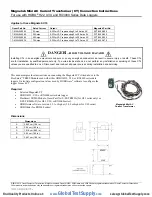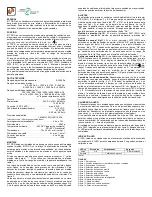
SITRANS TH200/TH300
Operating Instructions, 06/2010, A5E00393069-03
89
List of abbreviations
B
B.1
Abbreviations
Abbreviation
Full term in English
Meaning
FIT
Failure in Time
Frequency of failure
Number of faults withing 10
9
hours
HFT
Hardware Fault Tolerance
Hardware fault tolerance:
Capability of a function unit to continue executing a required
function in the presence of faults or deviations.
MooN
"M out of N" voting
Classification and description of the safety-instrumented system
in terms of redundancy and the selection procedures used.
A safety-instrumented system or part that consists of "N"
independent channels. The channels are connected to each
other in such a way that "M" channels are in each case
sufficient for the device to perform the safety instrumented
function.
Example:
Pressure measurement: 1oo2 architecture. A safety-
instrumented system decides that a specified pressure limit has
been exceeded if one out of two pressure sensors reaches this
limit. In a 1oo1 architecture, there is only one pressure sensor.
MTBF
Mean Time Between Failures
Average period between two failures
MTTR
Mean Time To Restoration
Average period between the occurrence of a fault in a device or
system and restoration of functionality
PFD
Probability of Failure on Demand
Probability of dangerous failures of a safety function on demand
PFD
AVG
Average Probability of Failure on
Demand
Average probability of dangerous failures of a safety function on
demand
SFF
Safe Failure Fraction
Proportion of safe failures:
Proportion of failures without the potential to bring the safety-
instrumented system into a dangerous or non-permissible
functional status.
SIL
Safety Integrity Level
The international standard IEC 61508 defines four discrete
Safety Integrity Levels (SIL 1 to SIL 4). Each level corresponds
to a range of probability for failure of a safety function. The
higher the Safety Integrity Level of the safety-instrumented
system, the lower the probability that it will not execute the
required safety functions.
SIS
Safety Instrumented System
A safety-instrumented system (SIS) executes the safety
functions that are required to achieve or maintain a safe status
in a system. It consists of a sensor, logic unit/control system
and final controlling element.
TI
Test Interval
Testing interval of the protective function
Summary of Contents for SITRANS T4200
Page 7: ...Table of contents SITRANS TH200 TH300 6 Operating Instructions 06 2010 A5E00393069 03 ...
Page 71: ...Service and maintenance SITRANS TH200 TH300 70 Operating Instructions 06 2010 A5E00393069 03 ...
Page 97: ...Glossary SITRANS TH200 TH300 96 Operating Instructions 06 2010 A5E00393069 03 ...











































